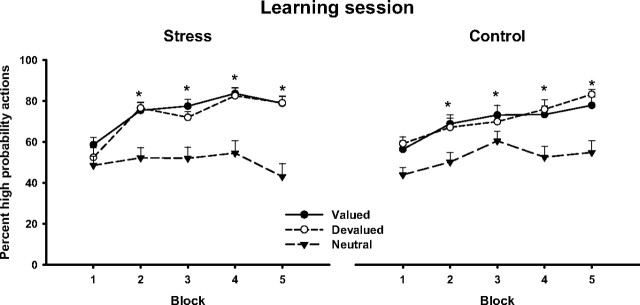Figure 3.
Percentage of high probability choices across the learning session (1 block = 15 trials). Both stressed and control subjects favored increasingly the high probability actions associated with the subsequently valued and devalued outcomes (i.e., chocolate pudding and orange juice) over the corresponding low probability actions (*p < 0.05, corrected). No such preference was observed in the neutral outcome trials, in which participants were indifferent between the high and low probability actions. Data represent means ± SEM.

